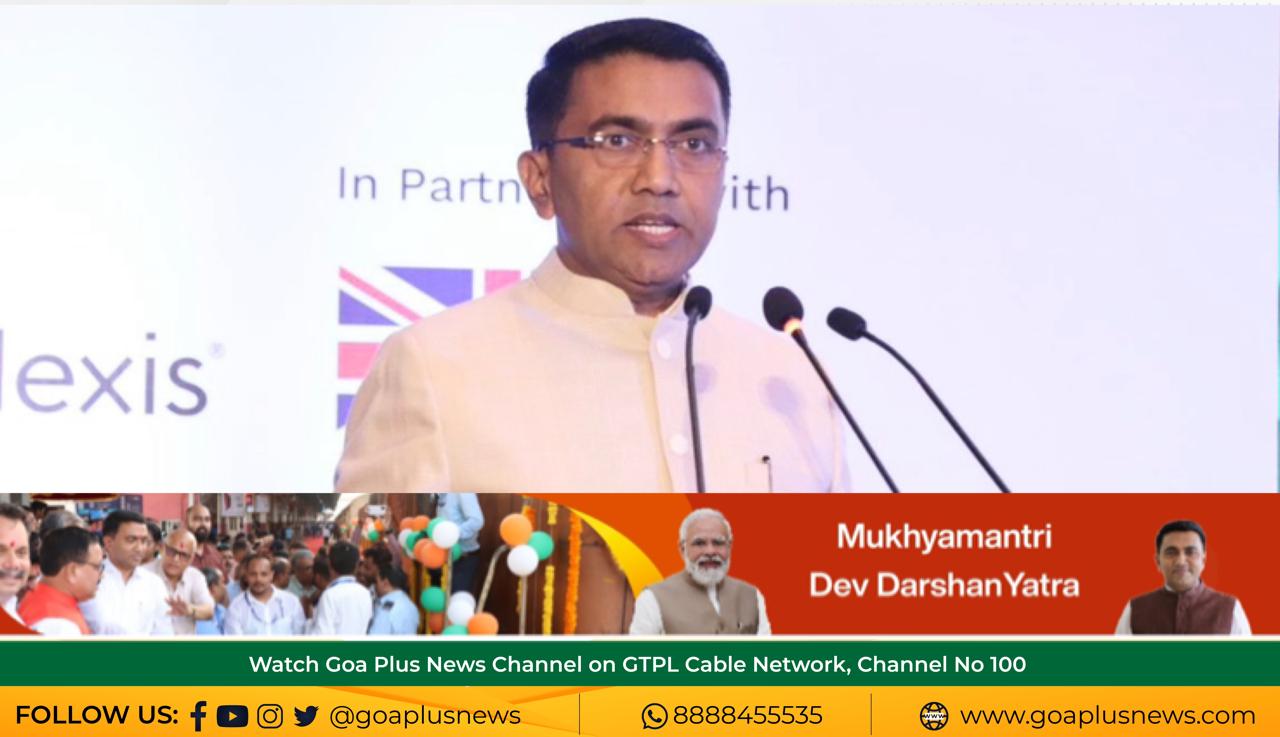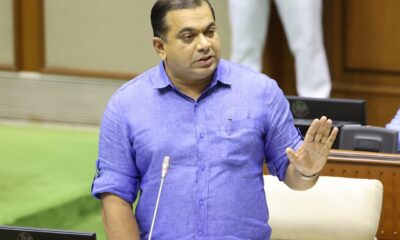Published
1 year agoon
By
goaplusnews
Panaji, the capital city of Goa, aims to be a complete ‘solar city’ within two years, chief minister Pramod Sawant who is also the chairman of the Goa Energy Development Agency (GEDA), the nodal agency for prompting the state’s aim to achieve its renewable energy goals, said.
“The Ministry of Renewable Energy and GEDA, have decided to make Panaji a solar city. For this we will need to generate around 80 megawatt (MW) of renewable energy power. For this we need the support of the people to adopt rooftop solar projects along with solar projects on government buildings,” the chief minister said.
The government’s plan is two-fold — it is hopeful of covering as many buildings within the city as possible with solar panels including residential, commercial and government buildings, but also in asking people to ‘adopt’ solar panels that will be set up in areas outside the city and will be compensated through net metering for their power bills.
The solar farms that could be set up in locations around the state by the government in collaboration with private players will then be adopted by individuals who will benefit by way of free power through a system of net cost metering.
Earlier, the state had said it was examining the possibility of setting up floating solar panels in abandoned mining pits as part of a push to ensure a 50% power by renewable energy by 2030 and 100% by 2050. However, the uptake of rooftop solar installations has been low despite a 50% subsidy being offered.
The low power tariff in the state has served as a move to discourage citizens from taking up the rooftop solar scheme in Goa, launched three years ago in 2019 — since the time taken to break even on one’s investment is six to seven years unlike in states such as Gujarat and Maharashtra, where the higher tariff for domestic users means that a return on one’s investment can be recovered within a span of two to three years.
“Goa currently relies on electricity that is supplied mainly from the Korba coal fired power plant in Chhattisgarh, but also from plants in Himachal Pradesh and Andhra Pradesh among others. The idea is that we wean the people away from fossil fuel powered energy as well as make the state more self-sufficient in its energy needs,” Sanjeev Joglekar, the member secretary of the GEDA, said.
The GEDA is offering those who wish to take up the scheme an opportunity to pay no money upfront, and instead pay for the solar panels they ‘buy’ through a net metering system wherein the money will be deducted via their energy savings over the course of six to seven years.
The Goa government is currently buying power from the national grid at the rate of ₹5-6 per unit.
More than 80% of the state’s consumers are domestic consumers, a bulk of whom consume between 0-200 units per month — which is billed at ₹1.65 per unit between 0-100, ₹2.35 per unit between 100-200 and ₹2.95 per unit between 200-300.
“The government is selling coal-fired power at a subsidised rate to consumers in Goa with the subsidy of ‘at least’ ₹2 per unit, which is paid by the state exchequer with a budgetary allocation of ₹350 crore,” an official of the state power department said.
The Goa government continues to offer 50% subsidy on those taking up the scheme with 40% from the Centre and 10% funded by the state.
“Those who take up the scheme have the advantage of relying on clean power as well as helping the state reduce its loss on supplying electricity at a subsidised rate,” Joglekar said.
Among the other challenges Goa faces is the lack of available land. As per the current efficiency ratio, generating one MW of power requires between 10-12,000 square metres of solar panelling. To generate 80 MW of power would mean setting up a wind farm of 9-lakh sq metres of land.


MLA Sankalp Amonkar Urges Action on Agriculture, Civil Supplies, and Handicrafts in Assembly Demands


CSC Diwas Celebrates 15 Years by Honoring VLE Excellence


MLA Borkar Flags Soaring Unemployment in Goa, Demands Overhaul of Employment Exchange Act


Manipal Hospital Performs Life-changing Restorative Surgery Saves Hand of a resident of Sawantwadi


The all-new BMW CE 04: First premium electric two-wheeler in India.


After Due Repairs, Public Toilets At Vagator will be Functional: TM Khaunte










